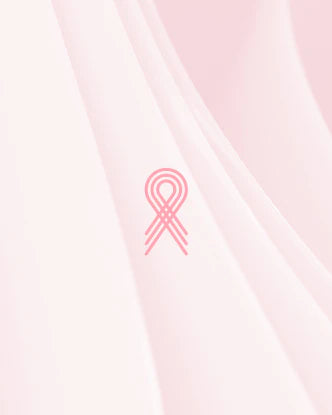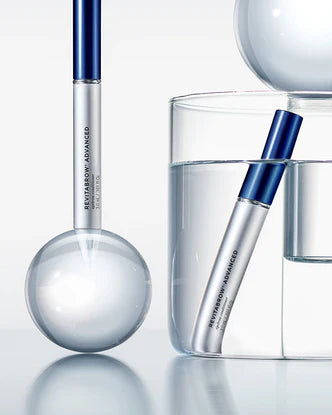While many symptoms of pregnancy aren’t so fun (morning sickness, sleep loss, heartburn), there do happen to be a few perks – one being gorgeous, lush locks. This is because when you’re expecting, your hormones keep your hair from shedding on its regular schedule. Unfortunately, all good things must come to an end, and after the baby is born and hormones adjust, most women go through an extreme shedding phase, or postpartum hair loss.
It’s important to note that it is completely normal for hair to thin after pregnancy, and truthfully, there’s nothing you can do to stop it. However, there are some ways to make hair appear fuller and feel thicker. It all starts with understanding why postpartum hair loss happens—so let’s begin there.
What Is Postpartum Hair Loss?
Postpartum hair loss is the excessive shedding that happens after giving birth, due to a shift in hormone levels. It’s normal, and thankfully, it’s usually temporary.
Why Is My Hair Shedding?
To understand postpartum hair loss, you first need to know that each hair on your head has a growth cycle, which cycle consists of:- The anagen or growing phase, which typically lasts 3–5 years for the hair on your head
- The catagen or transition phase, which lasts 10 days
- The telogen or resting phase, when hair has reached its final length, and which lasts around 3 months
- The exogen or shedding phase, which lasts 2–5 months
During pregnancy, this growth cycle shifts. When you’re pregnant, your hormone levels adjust to support your baby’s growth, and the increase in hormones such as oestrogen also affects your hair. During this time, each hair remains in its growth phase for longer. This means you’re shedding fewer hairs than normal, which is why hair looks so lush and full during your pregnancy.
But once you deliver, your hormones begin to return to pre-pregnancy levels. The drop in oestrogen triggers many strands of hair to enter their resting phase all at once…and this phase is followed by (you guessed it) the point when those hairs fall out. You’ll notice you’re shedding more hairs than normal during this time, and you may find larger clumps of hair on your brush, pillow, or shower drain. The term for this type of hair loss is telogen effluvium.
When Does Postpartum Hair Loss Start?
You might begin to notice postpartum hair loss around three months after giving birth, and it usually peaks around the four-month mark.
How Long Does It Last?
Excessive shedding should resolve by one year after you’ve given birth. If it doesn’t, you’ll want to schedule an appointment with a dermatologist. Find more information on postpartum hair loss here.
What Can I Do for Postpartum Hair Loss?
While postpartum shedding may not be avoidable, there are some ways to make your hair look healthier and fuller—and give you a confidence boost.
1. Ditch the heat.
It’s no secret that heat styling can be damaging to hair, so while you’re experiencing postpartum hair loss, it’s a good idea to be as gentle with hair as possible. Instead, try air drying, braids, or styles that let you skip a wash.
2. Be gentle.
Rough drying with a towel or aggressively brushing your hair are never a good idea, but especially so during the fourth trimester. Make sure to brush hair gently, starting at the ends and working your way up to the roots, and use a microfiber towel for hair drying.
3. Don’t forget your vitamins.
Vitamins are just as important after you give birth as they are during your pregnancy. It is recommended to continue taking your prenatal vitamin after baby is born to supplement your diet, especially when breastfeeding. Nutrients are needed for the health of your whole body, including your hair.
4. Use a thickening shampoo and conditioner.
These products are specifically formulated for those with fine and thinning hair, and use nourishing, volumizing ingredients help hair appear fuller-bodied. We created our Thickening Shampoo and Thickening Conditioner with ingredients to optimize scalp health and strengthen hair while protecting strands from environmental stressors. When used together, these phyto-infused formulas fortify the cuticle and work to improve hair shaft thickness.
5. Try a volume enhancer.
When dealing with thinning hair, it’s important to look for products that are physician formulated, clinically tested, and color safe. This ensures you’re using a product that is created with the best ingredients, has been tested to ensure results, and is safe for even damaged hair.
Our Volume Enhancing Foam checks all those boxes, and then some. This transforming product features our proprietary BioPeptin Complex® to boost the vitality of hair and intensify natural volume. Its clean, lightweight formula adds shine and body and improves elasticity to help combat breakage and aid in conditioning of the scalp. In a 4-week consumer study with 33 participants, 97% said their fine hair looked and felt fuller and more voluminous, while 94% said thinning hair looked thicker, healthier, and nourished.
When used together, the products in our Volumising Hair Collection are the perfect regimen for postpartum thinning hair, and will help you get back to the look of lush, flowing locks in no time.







